July 2018 Archives
Today Attorney General Jeff Sessions held a press conference announcing the Justice Department's religious liberty task force. The summary of Sessions's statement provided on Good Morning America's Facebook page did not seem at all alarming -- in fact it seemed welcome and overdue:
Sessions says the task force will "help the Department fully implement our religious liberty guidance," including "making sure our employees know their duties to accommodate people of faith."
Nor was the 90-second snippet of a press conference that GMA posted anything that seemed controversial.
And yet a Facebook friend, not usually one to post about politics, posted the link with the comment, "I can't believe this is constitutional." This friend's post received four "angry face" reactions. On the original GMA post, there are nearly 3,000 angry reactions, about 700 thumbs-up, and just over 600 expressions of astonishment. Most of the comments on the GMA post appear to be some ranty variation of "Doesn't he know there's supposed to be separation of church and state!"
The Constitution does not require the Federal Government to be hostile to religion or religious people. In fact, it requires the government to avoid burdening the free exercise of religion. Our nation was founded and settled by people (mainly various sorts of Christians) who wanted a place where they could live out their religious beliefs without suffering the persecution and restrictions they faced back in Europe.
For example, in England and Ireland, under the Test Acts and Penal Laws, someone who was not an Anglican was banned from holding public office, serving as an attorney, graduating from Oxford or Cambridge, or even voting. Worship services of religious dissenters could not be held in cities and dissenting preachers might be thrown into prison.
It would be a betrayal of the Pilgrims, Quakers, Catholics, Scots-Irish Presbyterians, Baptists, Amish, and other religious people fleeing persecution to create this country if America turns into a country where once again the Government can impose fines, jail time, or discriminatory restrictions on living according to your religious beliefs.
Here is a link to the full text of Attorney General's speech. Sessions began by describing the importance of religious liberty to those who settled America and those who framed its government:
Freedom of religious is indeed our "first freedom"--being the first listed right of our First Amendment. This has been a core American principle from the beginning. It is one of the reasons that this country was settled in the first place.The promise of freedom of conscience brought the Pilgrims to Plymouth, the Catholics to Maryland, the Quakers to Pennsylvania, the Scot-Presbyterians to the middle colonies, and Roger Williams to Rhode Island. Each one of these groups and others knew what it was like to be hated, persecuted, outnumbered, and discriminated against. Each one knew what it was like to have a majority try to force them to deny their natural right to practice the faith they held dear.
Our Founders gave religious expression a double protection in the First Amendment. Not only do we possess freedom to exercise our beliefs but we also enjoy the freedom of speech. Our Founders' understanding of and commitment to religious freedom was truly brilliant as well as historic. It arose in large part from the principals delineated in the Virginia Statute for Religious Freedom--and its effective advocates: Madison and Jefferson. These guys were ferocious. This weekend, I was rereading Gary Wills' fabulous book, Head and Heart, in which he quotes extensively from Jefferson's Statute, as he refers to it. I commend all of it to you; but one line stood out in particular to me, "That almighty God hath created the mind free, and manifested His supreme will that free it shall remain, by making it altogether insusceptible of restraint."
Of course, this is entirely consistent with another of my favorite Jefferson quotes that you will find at his memorial just across the mall from where we are today: "For I have sworn upon the altar of God eternal hostility against every form of tyranny over the mind of man." This is what our Founders believed. They clearly recognized that an individual's relationship to God is a natural right and precedes the existence of the state, and is not subject to state control.
These concepts were placed into our Constitution and laws and formed a national consensus that has greatly militated against religious hostility and violence--and has helped us to this day to be one of the world's most diverse religious people.
There can be no doubt that we are stronger as a nation because of the contribution of religious Americans. Every day across America, they feed the hungry, shelter the homeless, educate our young people, and care for the sick. They do so not because the government tells them to, but because they want to. They do these things because of their faith. Their faith provides something the state can never provide--meaning and purpose and joy in their life.
(NOTE: The transcript has a paragraph break after each sentence, arranged no doubt for convenience in delivering a speech. For the sake of readability I've provided paragraph breaks where they make sense.)
Sessions then described current threats to free exercise of religion and actions that the Department of Justice has taken to enforce the laws protecting them:
But in recent years, the cultural climate in this country--and in the West more generally--has become less hospitable to people of faith. Many Americans have felt that their freedom to practice their faith has been under attack. And it's easy to see why. We've seen nuns ordered to buy contraceptives. We've seen U.S. Senators ask judicial and executive branch nominees about dogma--even though the Constitution explicitly forbids a religious test for public office. We've all seen the ordeal faced so bravely by Jack Phillips.Americans from a wide variety of backgrounds are concerned about what this changing cultural climate means for the future of religious liberty in this country....
The Department of Justice has settled 24 civil cases with 90 plaintiffs regarding the previous administration's wrong application of the contraception mandate to objecting religious employers. Last month, a district court in Colorado issued a permanent injunction in the case involving the Little Sisters of the Poor, a group of nuns who serve the elderly poor. This is a permanent injunction and a major victory for the Little Sisters of the Poor and religious freedom. The government has no business telling the Little Sisters that they must provide an insurance policy that violates their sincere religious beliefs....
Since January 2017, we have obtained 11 indictments and seven convictions in cases involving arson or other attacks or threats against houses of worship. Our Civil Rights Division has also obtained 12 indictments in other attacks or threats against people because of their religion.... Three weeks ago, we obtained a jury verdict against a man who set fire to a mosque in Texas and sentenced for a man from Missouri for threatening to kill members of a mosque....
In January, we filed a brief in a Montana court to defend parents who claim that the state barred their children from a private school scholarship program because they attend a religious school. We also filed an amicus brief on behalf of the Archdiocese of Washington, D.C., which was refused advertising space for having a religious message--including "joy to the world" on Merry Christmas....
When I was in the Senate, we passed a law called the Religious Land Use and Institutionalized Persons Act, or RLUIPA. Under RLUIPA, the Department of Justice can file a civil action in court when religious groups are discriminated against in zoning laws. Under my tenure as Attorney General, we have not hesitated to use this tool when necessary. In June, we filed suit against a town in New Jersey that had refused over and over again--for eight years--to let an Orthodox Jewish congregation buy land for a synagogue. And just last week we filed a brief in federal court supporting the case of a Hindu temple in Maryland that claimed to have suffered discrimination in its attempts to purchase land.
Sessions provided a brief description of the guidance memo issued earlier:
Soon after taking office, President Trump directed me to issue explicit legal guidance for all executive agencies on how to apply the religious liberty protections in federal law. Our team embraced that challenge. I issued that guidance in October, and it lays out 20 fundamental principles for the Executive Branch to follow. Those include the principle that free exercise means a right to act--or to abstain from action. They include the principle that government shouldn't impugn people's motives or beliefs.We don't give up our rights when we go to work, start a business, talk about politics, or interact with the government. We don't give up our rights when we assemble or join together. We have religious freedom as individuals and as groups. In short, we have not only the freedom to worship--but the right to exercise our faith. The Constitution's protections don't end at the parish parking lot nor can our freedoms be confined to our basements.
Under this administration, the federal government is not just reacting--we are actively seeking, carefully, thoughtfully and lawfully, to accommodate people of faith. Religious Americans are no longer an afterthought. We will take potential burdens on one's conscience into consideration before we issue regulations or new policies. And this Department of Justice is going to court across America to defend the rights of people of faith.
Finally, he announced formation of a religious liberty task force within the DOJ to ensure that the laws which have already been approved by Congress and various presidents are enforced.
The Task Force will help the Department fully implement our religious liberty guidance by ensuring that all Justice Department components are upholding that guidance in the cases they bring and defend, the arguments they make in court, the policies and regulations they adopt, and how we conduct our operations. That includes making sure that our employees know their duties to accommodate people of faith.As the people in this room know, you have to practice what you preach. We are also going to remain in contact with religious groups across America to ensure that their rights are being protected. We have been holding listening sessions and we will continue to host them in the coming weeks.
This administration is animated by that same American view that has led us for 242 years: that every American has a right to believe, worship, and exercise their faith in the public square. This approach has served this country well. We are perhaps the most religiously developed nation in the world and can take pride in respecting all people as they fully exercise their faiths. It is clear that these policies have furthered peace, prosperity, freedom, lawfulness, and clarity. As our nation grows older, we must not let it depart from this magnificent tradition.
Here is Sessions's 25-page memo, "Federal Law Protections for Religious Liberty". It begins with 20 principles, each with a paragraph of elaboration. There follows specific guidance for the various roles a federal agency may play: as an employer, as a rulemaker, as an enforcer of Federal law, as an issuer of contracts or grants. The last 17 pages are an appendix of technical legal details, reciting relevant Federal law and Supreme Court decisions that must govern Federal agencies.
An accompanying two-page directive explains how the DOJ officials who report to the Attorney General are to apply the principles set out in the guidance memo: To incorporate the principles into the DOJ's own employment, rulemaking, enforcement, contracting, and grant-issuing policies; to correct course in DOJ litigation where the previous administration acted contrary to these principles; to apply the principles when issuing legal guidance to other agencies of the Executive Branch; to ensure that new rules issued by other agencies and referred to the DOJ's Office of Legal Policy are consistent with Federal religious liberty laws; and to require all DOJ components, including U. S. Attorney offices, to confer with the Associate Attorney General on "all issues arising in litigation, operations, grants, or other aspects of the Department's work that appear to raise novel, material questions" regarding religious liberty law.
So why the hostile public reaction to what appears to be a firm commitment to upholding the Constitution and laws of the United States regarding religious liberty?
I suspect part of it is that those who have chosen a life of sexual immorality are worried that someday they may encounter someone who is less than enthusiastic about their moral choices. While religious liberty is enshrined in our Bill of Rights and Federal law, sexual license is not, and yet many Americans regard sexual activity as the only source of transcendence, and they consider universal approval of their sexual proclivities a fundamental right.
Their solution to this, articulated by former President Obama and presidential candidate Hillary Clinton, is to reduce the robust protection for freedom of religion to a mere "freedom of worship." So you can think your thoughts privately or discuss them within the walls of your church, but you must set all your religious beliefs aside when you speak in public, when you go to work, when you run your business, when you interact with the Government. This is the sort of bare toleration that the settlers of America endured in the old country under the Test Acts and Penal Laws, not the robust freedom of religion that they sought when they crossed the Atlantic Ocean to the New World.
It should worry religious Americans that so many of our relatives, friends, and co-workers are angered that the Federal government intends to protect our long-standing religious liberties. But we ought to thank God that, at least for the next two-and-a-half years, the U. S. Department of Justice will be doing just that.
MORE: In 2015, Oklahoma Senator James Lankford expressed concerns about the Obama administration's emphasis on "freedom of worship" over "freedom of religion."
On the Map Scans Facebook group, someone posted a link to the Internet Archive's copy of the 1980 State Farm Road Atlas, which was a rebranded Rand McNally Road Atlas. That got me wondering about finding earlier editions, and I did a search for items published by Rand McNally. The results were much broader than I expected. I knew that the company had published children's books -- I had several growing up -- but I was amazed by the number of other topics included. Before the days of automobile travel, there were "Handy Guides" to major American cities and for now-legendary World's Fairs in St. Louis, Buffalo, and Chicago. There is even some long-obsolete Rand McNally software available on the archive.
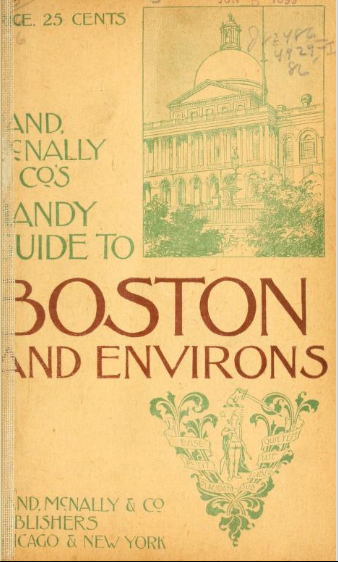
Here's a short list of interesting items I found:
- 1893: Handbook of the World's Columbian Exposition: The great World's Fair in Chicago to commemorate the 400 anniversary of Columbus's voyage of discovery. Midway Plaisance, White City, and the lakefront are all legacies of this fair. This book includes maps of the grounds and of major exhibition buildings, with descriptions of what you'd find in each. Australia didn't yet exist, but New South Wales had a pavilion. Oklahoma shared a Joint Territorial building with New Mexico and Arizona.
- 1893: Diagrams of World's Fair Buildings showing Location of Exhibits: Maps and building plans (but no description) from the Chicago World's Columbian Exposition
- 1895: Chicago City Railway Directory and Street Number Guide: "Accurately locating any given number of any street or avenue, and showing the street car line most convenient for reaching it. Also giving the route of every car line, with distinguishing colors of cars and lights; night line time tables, etc."
- 1898: The Washington Post Standard War Atlas: The war being the Spanish-American War.
- 1899: Handy Guide to Boston and Environs: Descripitions of streetcar routes and the recently opened Tremont Street subway, photos of important buildings, including my church home-away-from home, Tremont Temple, which opened its doors for public lectures between Sundays. The current building was only six years old at the time, having been rebuilt after a fire.
- 1904: The Rand-McNally economizer; a guide to the World's fair, St. Louis, 1904: The guide tells the reader how best to spend six days at the fair, winding up in a reproduction of old Jerusalem. Oklahoma has its own building now: "A composite Corinthian effect has been admirably planned and carried out by the architect [A. J. Miller of Oklahoma City] of this building. Large porches with wide ornamental arcades surround the front of both floors, and a view of the immense reception hall may be obtained from the wide gallery on the second floor." The Philippine village rates four pages of description and a photo. There is an exhaustive catalog of artworks on display and of the items from Queen Victoria's Jubilee Presents -- items received from the far reaches of the Empire in honor of her 50th and 60th anniversaries on the throne.
- 1914: United States Colonies and Dependencies Illustrated by William Dickson Boyce: A 600 page book describing our colonies (Alaska, Hawaiian Islands, Philippine Islands, Porto Rico, the Panama Canal Zone and Republic of Panama) and our dependencies (Cuba, Haiti, Dominican Republic).
- 1914: Atlas of the European Conflict: "containing detailed maps of the nations, pertinent statistics of the contending powers, analysis of conditions leading up to the present struggle." Includes a very nice detailed map of the German Empire with its component kingdoms and duchies.
- 1915: Rand McNally official auto trails map of the United States: Before the numbered U. S. highway system of 1926 there were named highways marked on telephone poles: Jefferson Highway, Ozark Trail, Dixie Highway, Old Spanish Trail, and the famed Lincoln Highway.
- 1916: Washington guide to the city and environs: Streetcar routes, ads for grand hotels, descriptions and photos of monuments and prominent buildings (including the then-new Post Office, now a Trump hotel). There is a detailed map and guide to the Library of Congress, including photographs and descriptions of its murals and inscriptions. The Corcoran Gallery, Smithsonian Institution, White House, and Capitol also enjoy extensive description. There is even a section to help you navigate the etiquette if you happen to attend a dinner with the President. At the back you'll find patent medicine ads, and information on electric railway transportation to the Great Falls of the Potomac. You could have gotten a pretty decent civics education from this book, which not only shows you the major federal office buildings, but explains what functions are performed within.
- 1918: Ukraine: The Land and Its People: By Prof. Stephen Rudnitsky of the University of Lemberg, a city later known as Lwow, Poland, and now Lviv, Ukraine. Published by the Ukrainian Alliance of America. Written in Ukrainian and translated into German and then from German to English. "The reader is respectfully requested to note that the few unpleasant references to Russia are of course meant to apply to the Russia of the Czars, as the book was written during the Czarist regime."
- 1919: Summary of the Treaty of Peace: Map showing the new, post-World War I boundaries of Europe. Jugo-Slavia, Poland, and Czechoslovakia exist, and Germany has lost territory to France, Poland, and Denmark, but the Baltic States have yet to be created. Turkey's partitioning is curious.
- 1919: What Calvinism Has Done for America by John Clover Monsma: This is worth further exploration. The author attempts to show the roots of America's greatness in the doctrines and habits of Calvinism, which he boils down to the core idea of God's sovereignty and traces two centuries before Calvin to the English theologians William of Occam and Thomas Bradwardine.
- 1921: Australia and New Zealand Illustrated by William Dickinson Boyce: Hopefully there's another version out there; this scan lacks all the illustrations.
- 1960: The Elves and the Shoemaker: The Brothers Grimm tale, illustrated by Esther Friend.
- 1973: Rand McNally Road Atlas and Travel Guide: This is a smaller format atlas, with each state on a single page, and only major highways shown.
- 1980: State Farm Road Atlas. United States / Mexico / Canada: A standard Rand McNally Atlas of the period with State Farm insurance ads on the outer and inside covers.
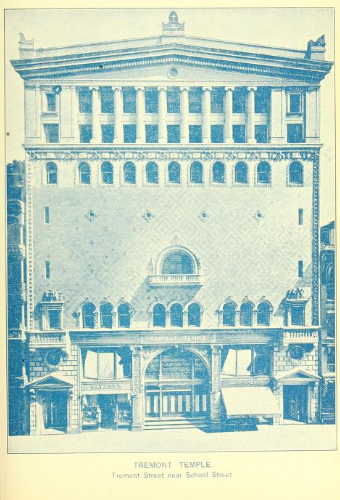
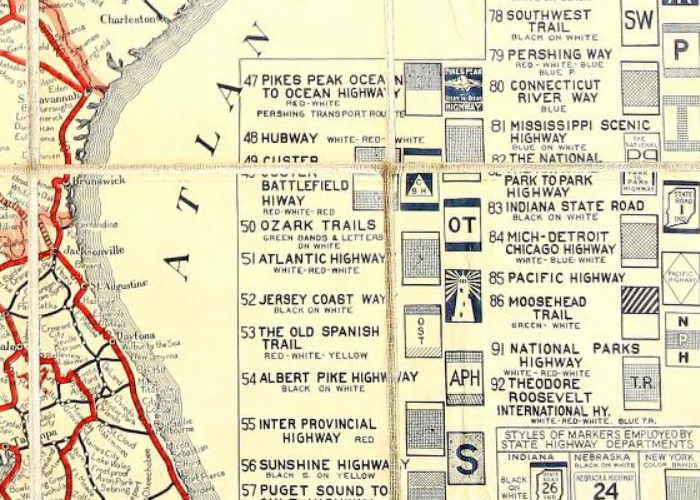
The older books are public domain; newer books are available for 14-day loan, if you have a free Internet Archive account.
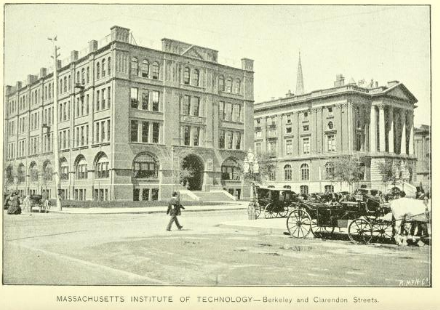
William Newbill, who was a political activist in Tulsa in the 1970s and 1980s, emailed me a few days ago to ask whatever had happened to Accountability Burns. I haven't spotted him recently. The perennial candidate, who ran for mayor as recently as 2009, would be 91 years old. Over the years, I've spotted him at Central Library, a lunch room at TCC downtown, and around downtown.
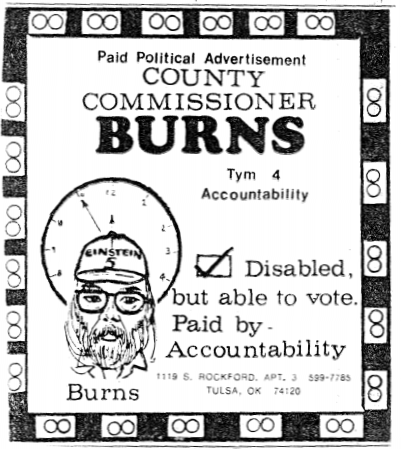
William shared some memories from his years in Tulsa and his dealings with Burns, and he gave me his permission to share them here:
I left Tulsa in 94 to work for the feds as a lawyer. I had been active in both parties before then. I had a meteoric rise and fall in the GOP as a very young man from 1975-1980 which included a year at the RNC on Capital Hill. But I was thrown out in 1980 for refusing to support Reagan. I was Northeast Oklahoma Regional Co-Chair of the John Anderson Presidential Campaign. Those are mainly the times I saw the guy.It took many years to get inside with the Democrats in Tulsa but by the time I left I was an insider in the party. 84 County Convention delegate for Hart. 1988 State Convention Delegate for Dukakis, finally a high level volunteer in the 94 AG's Dem race for some guy in Tulsa, I think his name was Jeff Nix. But I got a job offer from the feds and left before the primary. He was facing Drew Edmondson which was a suicide mission.
Burns was a character I ran into from age 17 in 1975 while filing a high school friend for Street Commissioner under the old system. But I ran into him a lot mainly by accident. He kept up with me by mail for a long time.
I last saw Accountability Burns one night at TU in 1993 after night law school was out. He looked like a homeless guy. He was on disability for mental impairments, reportedly schizophrenia that emerged while a grad student in mathematics. I gave him a ride down 11th street to his apartment.
As a younger person, referring back to the late 70s, I didn't realize he was mentally ill until one meeting when he thought it was reasonable to ask for an advance payment of two million dollars to appear in a debate.
Back then he was a perennial candidate in every election. After that, and over the years, I received a "Mars Gram" in the mail from him occasionally. Usually these were postcards. It took a while to decipher the code but it was a revealing look at his paranoid thoughts often including references to the "black international." It wasn't clear this was a racial category but I never figured it out.
Mr. Science had tried to tell us younger people back in the 70s that Burns was "nuts" but we didn't believe him initially. He had determined Burns didn't even know the basics of cartography even though he claimed to have a Ph.D. in the field.
Newbill's Facebook post prompted a comment from retired University of Tulsa Professor Steve Steib, who wrote that Burns would drop by his office now and then in the 1970s:
He was, at the time, working on a universal language that would be spoken and understood by all of earth's humans. His presence often reminded me of the thin line between brilliance and crazy. As time passed he seemed to spend more time on the crazy side of that line. It made me sad to see such talent slip away.
I've seen some of Burns's writings from that period. He had an idiosyncratic phonetic spelling system which took some time to decipher. In many of his writings he would claim that his wife had been abducted and was being held for an impossible ransom.
A friend of mine who had had some dealings with Burns around the same period speculated, based on various references in his writing, that he had been one of a group of mathematical prodigies ("Einsteins," and thus perhaps the source of his "Einstein V" moniker) working on a secret government program and snapped mentally. The "black international" William Newbill mentions may be a reference to clandestine operations (as in "black ops"). I remember reading a feature story about Accountability some years ago, which included Burns's brother talking about his mental illness and his background, but I can't seem to find it now. It may pre-date the digital archive of Tulsa's local dailies, which only goes back to 1989.
According to this "You Know You're From Tulsa" thread, as of December 22, 2017, (his 91st birthday), he still regularly ate lunch at the Hillcrest Medical Center cafeteria. I haven't found any more recent sightings. Public records indicate that he is still on the voter rolls (as "A. Burns") but hasn't voted since casting an early ballot at the election board in the June 2012 primary.
Back in 2012, after I published a collection of links about Accountability Burns, a friend (I can't track down who) sent me some documents by Burns from 1975, 1984, and 1987. I transcribed Accountability Burns letter to the Bar Association, but never got around to transcribing the other two.
Accountability Burns for County Commissioner, January 22, 1987
Deeper in the archives there's a Tulsa Tribune article about Accountability Burns 1988 campaign for Police and Fire Commissioner. Some people remember that he referred to the office, under Tulsa's pre-1989 charter, as "Pig and Fyr" commissioner.
If you have seen Accountability around town lately, or if you have stories of Close Encounters of the E-5 Kind that you'd like to share, please email me at blog at batesline dot com or send me a message through my Facebook page.